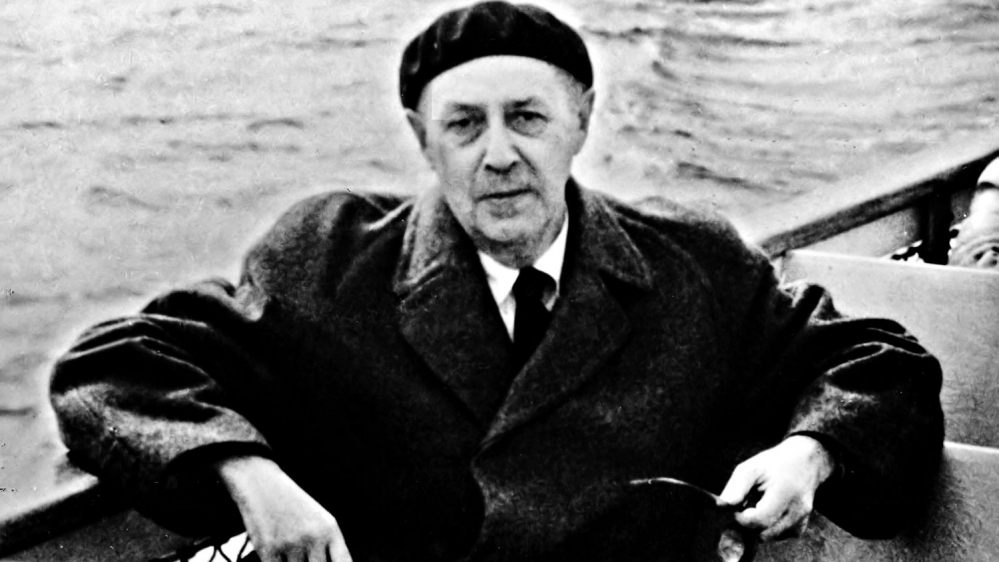The late Professor Mihály Szegedy-Maszák, himself a great admirer of Sándor Márai, nevertheless once confided to me that Márai ‘wrote too much’. But I’m glad Márai was so prolific, because, as a fan, there are still a few books I haven’t read. I’ve just finished “Idegen emberek’ (Foreign People). It was originally published in 1930, the same year as the much better-known, and arguably his best novel, “A Zendülők” (The Rebels). I can see why “Idegen emberek” hasn’t amassed the same following as The Rebels or Embers (his biggest hit in the English-speaking world). By Márai’s standards, it’s long and is unburdened by anything like plot. It was first published in two volumes, and indeed could be considered as two novels about the same thing, the first in third-person, the second in first-person narration.
In the nineteen-twenties, Paris was the cultural capital of the world, but its richest capital was its literature. Everyone turned up. It’s hard to think of a major twentieth century writer who didn’t spend some time in Paris, either pre-war or post-war. The French roll-call alone is impressive: Proust, Céline, Camus, Sartre and one of my favourites, Georges Duhamel, every bit their equal. Then come the tourists: Joyce, Pound, Beckett, Hemingway, Fitzgerald, Orwell, Miller, Nabokov. And most of the Hungarian writers of that generation, including Márai.
It’s one of the most ‘arty’ of Márai’s novels. Márai always has a fondness for repetition, for a stable of favourite words, for a sort of incantation in his prose, and here he often turns it up full blast, in a stream-of-consciousness mode. Perhaps “Ulysses” got to him.
Márai has always struck me as more of a journalist than a full-blooded novelist. His diaries are the texts to which I always return. His talent is very much for observation and description. Two of the most prominent characters in “Idegen emberek” are a cactus the nameless narrator brings with him from Berlin and the Dome café (now a high-class fish restaurant, then a more welcoming eatery for the hard-up). Much of the action takes place at the Dome, usually crammed with writers, artists and posuers battling for prominence. “Let’s leave,” says one of the characters in disgust, disappointed with the crowd around him, in a line to be repeated in the coming decades by hipsters and avant-gardistes all over the world: “It’s full of civilians this evening.”
“Idegen emberek” got a lukewarm review in Nyugat when it was published, but oddly, I’d maintain it’s a novel that has improved with age. Because it describes a world that has disappeared and contains a poignancy since the reader knows what’s coming down the road for everyone after the roaring twenties. Hindsight gives it extra flavour. But the book isn’t just a disguised memoir of Parisian eccentricities.
The protagonist stays in the Hotel Moliere and it’s a sly symbol for France, which seems to be a giant Hotel Moliere, a front of cultural embroidery, but rather short on the Moliere.
A curiosity as to the nature of “Europe” is something that Márai pioneers. I can’t think of any other major writer of his generation who’s pondering this in 1930. Perhaps you had to come from a small European country to feel the need. The book starts in Cologne as hyperinflation rages and is mostly about the protagonist avoiding return to a small town in Hungary to become a teacher. You get a full continental sweep. Again, Márai doesn’t posit any answers.
Fog and darkness are a persistent leitmotif in the book and there is one powerful scene where the protagonist is walking home in the early hours, by the Seine, near the Louvre, with a Russian friend. They see two policemen dragging someone along, by his legs, so his head is bumping on the paving stones, bleeding. “Europe,” the Russian comments quietly.
Marai’s career seems to have stalled in the English-speaking world. The last translation was in 2011, when “Az Igazi” and “Judit es...az utohang” were fused together as “Portraits of a Marriage”. “Embers” was the first of Márai’s books to be translated into English and had considerable success, but the subsequent titles somehow failed to make any impact.
The choice of titles could have been better. Even as a fully paid-up member of the Márai fan club, I don’t think I could whole-heartedly recommend “Conversation in Bolzano” to anyone. “Portraits of a Marriage” has some of Márai’s best writing, but I remember thinking at the time of publication, that certainly “Judit” might not make much sense to Anglo-Saxon readers.
One of the main tasks of literature is to explain and to transport the reader somewhere new, but the experience of exile, real exile, is so alien to the Anglo-Saxon world, that another major task of literature, clarifying experience so that the reader gasps ‘yes, that’s it, that’s exactly what it was like’, can’t succeed.
Márai’s career in Hungary has gone off the boil too. There was a mania after his death and the change of system, when his work was published or republished in Hungary. Bookshops practically had Márai sections and it got to the point where his shopping lists were almost collected. Up and down, that’s how it goes for a writer’s reputation. I do wonder whether the younger generation of Hungarian readers, like Americans and Brits, might not get the full value of Márai because their experience is so different.
For me, Márai remains the great Hungarian prose writer, the master of the twentieth century, and even if he’s not always at his very best, he’s still rather good.
Ez az írás magyarul is elérhető.










